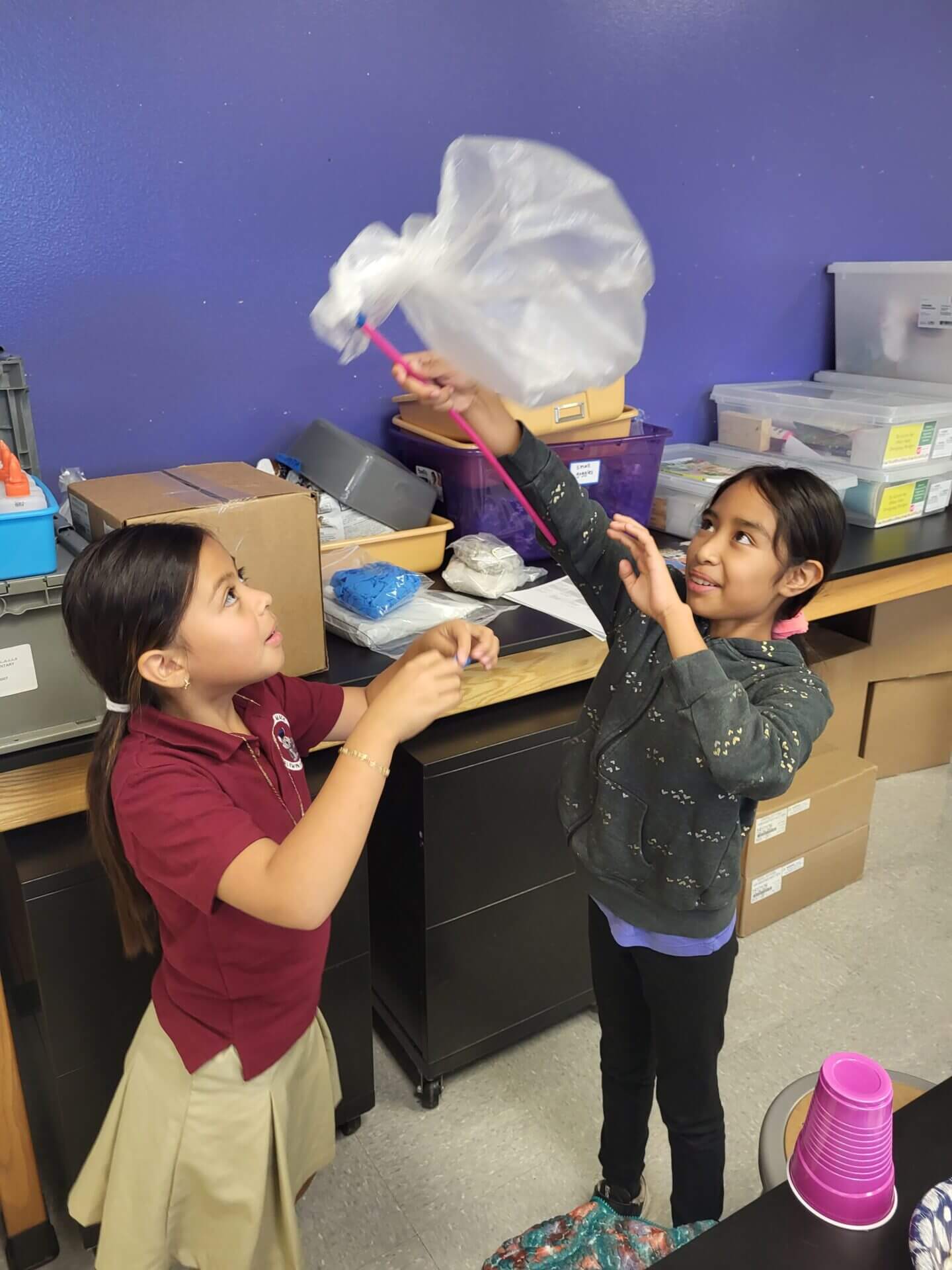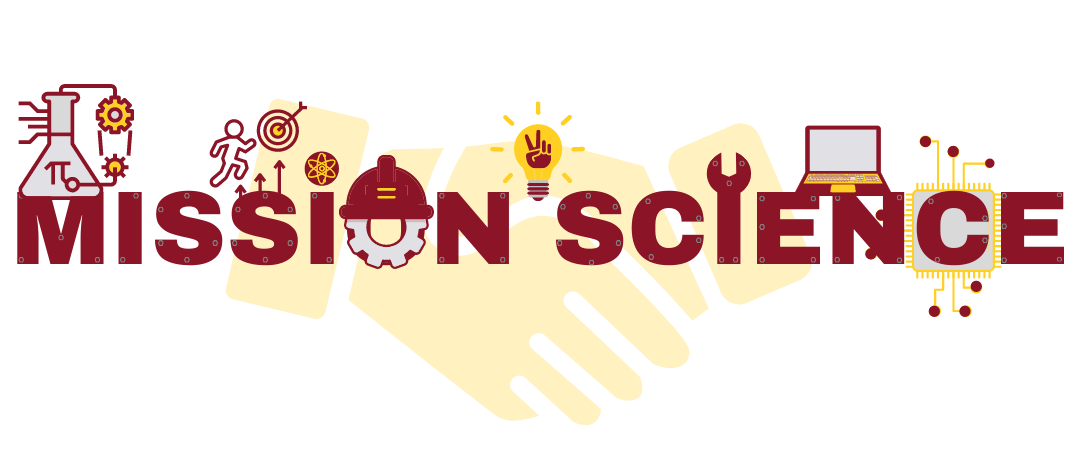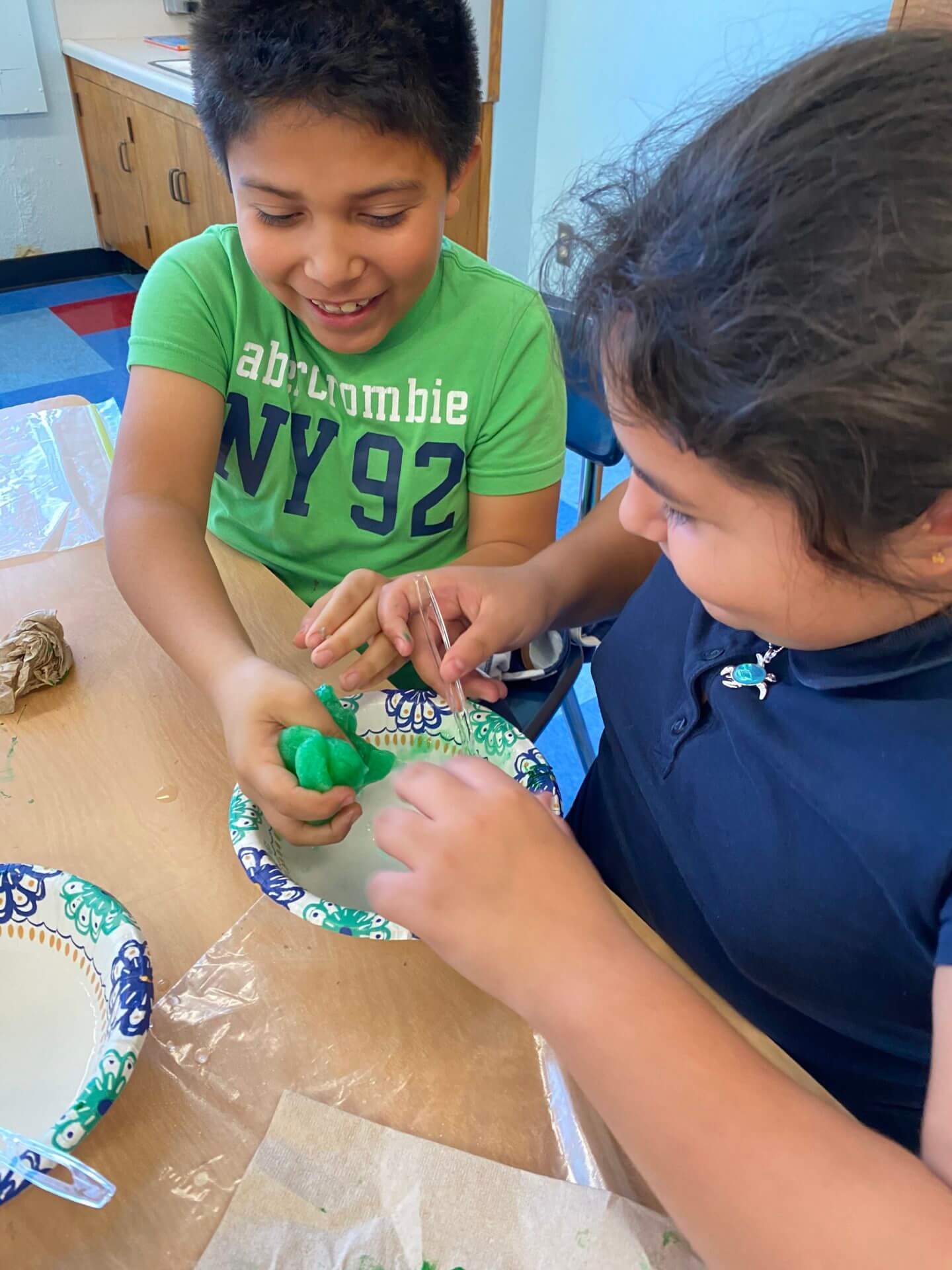Mission
Science

The K-12 STEM Center follows all University guidelines for protecting students, families, teachers, and staff during the COVID-19 pandemic. Learn More.

Mission Science (MS) takes place for 3rd-5th grade students at 7 elementary schools within the USC neighborhoods. The program involves USC students majoring in STEM facilitating hands-on, inquiry-based science and engineering activities to local youth once a week (in person), with the support and guidance of a teacher liaison.
Students will have the opportunity for continuous STEM engagement throughout the school year and are able to build their STEM skills, knowledge, and interests as they progress in the program. A major component that sets MS apart from other afterschool STEM programs is the access to university students majoring in STEM. The STEM Center has created an inclusion, diversity, equity, and access (IDEA) team to ensure all elements of each program (USC student training, culturally relevant lessons and activities, and student recruitment) including MS have an IDEA focus.
The K-12 STEM Center develops strategies and builds initiatives to meet the needs of a diverse population, specifically in efforts to increase the representation of female students and African American/Black, Hispanic/LatinX/Latine, Native/Indigenous students in its STEM programs, such as Mission Science. Some of those efforts include outreach, mentorship, and scholarships. However, all STEM Center programs are open to all students in compliance with Federal and State law, as well as University policy.

The continuing goal of Mission Science is to cultivate and nurture elementary school students’ STEM self-efficacy in order to contribute to a K-12 pipeline of BIPOC and female students who exhibit STEM literacy, pursue STEM as a major in college, and/or who embark upon a career in STEM.
Objectives:
-
MS students will have opportunities to engage in authentic, culturally relevant STEM experiences at school and at home.
-
MS student participants will build their STEM skills and knowledge, including knowledge of the engineering design process and scientific method
-
MS students will build confidence in their STEM skills and their belief that they can succeed in STEM (i.e. self-efficacy). Research has shown that a strong STEM confidence is a key indicator of STEM success. In meeting this objective, the majority of participants will demonstrate an increase in STEM confidence both related to specific skills and overall belief in their ability to succeed in a STEM field.
-
MS students will broaden their views of who scientists and engineers are. Research has found that students who identify scientists to be more similar to themselves are more likely to pursue and succeed in STEM.

Through collaboration with each school site, MS will ensure each session and associated lessons will provide an inclusive space for students of all races, ethnicities, genders, and abilities. MS will also ensure equity and access to each student by providing all of the necessary materials. The USC students will undergo equity training that allows for them to have a baseline for what an inclusive classroom looks like, and how they can ensure the students served feel a sense of belonging in STEM.
Our instructors serve as role models, allowing diverse MS students to see people that look just like them. This ultimately encourages youth to be able to see themselves as scientists, engineers, chemists, coders, or any other STEM-related field. Through this equity lens, this program extends much farther beyond the engaging activities provided. This serves as a safe space for all students to be welcome to the STEM table, in hopes of inspiring them to pursue careers they may have never imagined without this unique opportunity.
For questions about this program, please contact Mission Science Director:
Jennifer Kolbauer at kolbauer@usc.edu or reach out to Mission Science Coordinator Olivia Li at oli46762@usc.edu
Published on January 11th, 2017
Last updated on November 3rd, 2023

